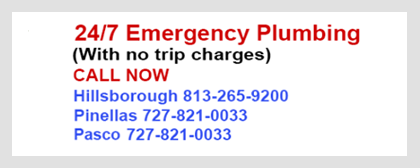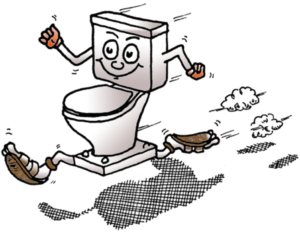
You have a running toilet for one of two reasons: Either water is leaking from the tank into the bowl, or the fill tube is refilling too much water into the tank, activating its overflow tube. You should be able to stop either problem quickly by adjusting the flapper, float, or tubes.
Often, running toilets are an easier to fix than homeowners think. In fact, you may be able to stop your toilet from running right now, without leaving your home for supplies or getting your hands dirty. If your toilet keeps running… and running, try making each of the following simple adjustments. The advise below may solve your problem plumbing problem.
Adjust the flapper
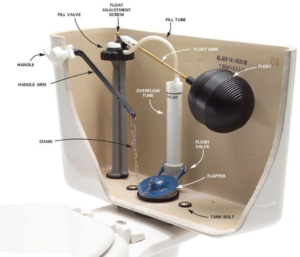
Your toilet’s flapper is the plastic cup at the bottom of the tank. When you flush your toilet, the flapper rises, allowing water from the tank to enter the bowl. If the flapper isn’t flush with the bottom of the tank, then water could slip past it into the bowl constantly. If that happens, the tank will drain until the refill tube has to fill it again… over and over again.
Flapper problems are the most common cause of running toilets. To attempt to fix the problem fast, turn off the toilet water, remove the flapper, and wash and scrub its plastic cap and stopper thoroughly. Put the flapper back when you’re done and try to fit it over the hole as snugly as possible. If the flapper still leaks, then you’ll have to replace it. You could fasten it down until you replace it–but remember to remove your fasteners before you flush!
Adjust the flapper chain
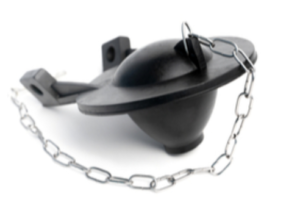
The flapper chain connects to both the flapper and the toilet’s handle. When you depress the toilet’s handle, you’re also raising the chain. Raising the chain lifts the flapper, allowing water to flow into the bowl. If the chain is too long or too short, it could interfere with how the flapper sits in the tank and create leaks. Luckily, adjusting the chain is easy.
First, remove your tank’s cover and flush the toilet, watching how the chain behaves. If it barely raises the flapper, it’s too short. If it’s so long that it threatens to get under the flapper, it’s too long. Either way, the fix is relatively simple. If the chain is too short, move the hook attaching the chain to the handle up a few links. If the chain is too long, try cutting a few links off of the top of the chain.
Adjust the float
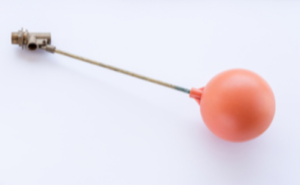
The toilet’s float is suspended and attached to the fill valve. After a flush, the fill valve adds water until the float… literally floats in the tank. When the fill valve no longer has to hold up the float itself, it stops adding water. If the float is incorrectly positioned, however, the fill valve could add too much water. This forces the overflow tube to drain the excess water repeatedly, which, in turn, forces the toilet to keep running.
There are two common types of float: ball floats and cup floats. Ball floats attach to the fill valve via the traditional arm. Cup floats wrap around the fill valve itself. In either case, you can manually adjust where the float is suspended within the tank by using the adjustment screw connected to the fill valve arm. Use a pliers to turn the screw counterclockwise to lower the float and clockwise to raise it.
Check the fill tube

The fill tube is a small plastic tube that connects the main fill valve to the overflow pipe (which is what your flapper is connected to). It should look like a small, flexible, curving plastic tube. While the fill valve refills the tank of the toilet, the fill tube is in charge of the bowl. The fill tube should always be above the water line in the tank, even when the tank is full.
If your fill tube is under water when the tank is full, then it could be the source of your running problems. This is particularly likely if your toilet runs intermittently even when full. To solve this problem, either manually bend the tube up out of the water, or trim it to cut down on excess length. Don’t worry: as long as the tube can reach between the fill and refill valves and remain above water level, it will work correctly.
Unfortunately, these simple adjustments will not solve all running toilet problems. If you’ve tried each of these with no luck, then you likely have to replace one or more of your toilet tank’s internal components. Don’t panic! Most of these replacement jobs are quick, cheap, and easy.


Even if you can’t figure out what your toilet’s problem is, you’re not out of options. You can always call the pros at Cass Plumbing. Our experts can diagnose and fix your plumbing problem–whatever it ends up being–right then and there, every time. Don’t let your running toilet waste any more water–fix it yourself or give us a call now at 813-265-9200!



